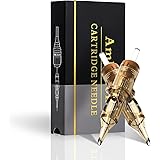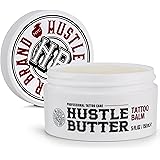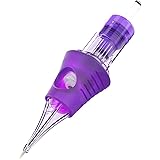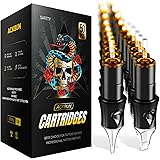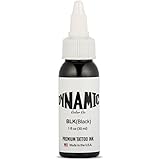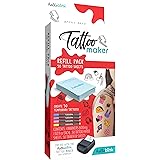Navigating the Maze: Choosing Your First Beginner Tattoo Machine
Embarking upon the path of a tattoo artist is often an exhilarating, yet complex, endeavor. One of the initial hurdles commonly encountered by aspiring professionals involves the selection of appropriate equipment, specifically the first beginner tattoo machine. As was highlighted in the accompanying video, the sheer volume of options—ranging from traditional coil machines to modern rotaries, intricate cartridge systems to versatile crossovers, and even wireless setups—can feel overwhelming. The critical issue is that an unsuitable machine can significantly hinder a beginner’s progress, potentially leading to client dissatisfaction and even skin trauma. However, with focused guidance and a clear understanding of fundamental requirements, the ideal tool can be identified, setting a solid foundation for a successful tattooing career.
Prioritizing Versatility and Forgiveness in Your First Tattoo Machine
For a novice, the characteristics of an optimal beginner tattoo machine are fundamentally distinct from those sought by seasoned professionals. A primary machine should be characterized by its ease of use, inherent versatility, and a forgiving operational nature. Imagine if a machine demanded extensive technical adjustments or rigorous handling from the outset; such complexities would invariably impede the learning process and could lead to inconsistencies in early work. Therefore, the longevity and comprehensive functionality of a single tattoo machine are paramount, enabling the exploration of various styles before specializing.
For these reasons, the use of coil machines or direct drive machines is generally not recommended for beginners. These machines, while powerful and preferred by some experienced artists for specific applications, are known for their less forgiving impact and higher operational complexity. The increased force with which they 'hit' the skin, coupled with the nuanced tuning required, raises the risk of errors such as blowouts or undue skin damage. A machine that incorporates a degree of 'give' in its design is typically advised. This 'give' functions as a form of suspension or cushioning for the needle, providing a margin of error. It effectively prevents the needle from penetrating too deeply into the dermis, even if excessive pressure is inadvertently applied, thereby safeguarding both the client's skin and the beginner's confidence.
Understanding 'Give' in Rotary Tattoo Machines
The concept of 'give' within a tattoo machine's motor mechanism is a critical feature, particularly for those new to the craft. Essentially, this refers to the controlled flexibility or 'play' in the needle bar's movement as it interacts with the skin. In rotary tattoo machines, 'give' is typically engineered into the motor or drive system, allowing for a slight absorption of impact. Conversely, direct drive machines, by their very nature, transmit the motor's power directly to the needle without this inherent dampening, resulting in a harsher, less forgiving hit. While a softer hit might necessitate multiple passes for certain saturations, this trade-off is often deemed acceptable for beginners, as it significantly reduces the likelihood of causing irreversible skin damage. Furthermore, machines with adjustable give offer enhanced control, allowing artists to tailor the impact for different skin types and tattoo styles as their skills evolve.
Ergonomics and Grip: A Personalized Fit for Precision
The ergonomic design of a tattoo machine, particularly its grip, plays an indispensable role in an artist's comfort, control, and ultimately, the quality of their work. It is recognized that each artist will develop a unique grip preference, influenced by their hand size, artistic background (e.g., drawing or painting), and preferred working posture. Some individuals may favor a wider grip, which facilitates a 'paintly' approach, keeping their hand slightly elevated from the skin. Others might prefer a narrower grip, allowing fingers to rest closer to the cartridge for finer control, mirroring a traditional drawing style.
The availability of interchangeable grips, offering varying thicknesses and textures, is a significant advantage for a beginner tattoo machine. Conversely, machines with a static, non-interchangeable grip can present ergonomic challenges if the default design does not align with the artist's natural hand position. An unnatural grip necessitates compensatory movements, leading to increased fatigue, reduced precision, and potential long-term musculoskeletal issues. Therefore, consideration must be given to a machine that either offers grip customization or inherently accommodates a wide range of natural hand positions, ensuring sustained comfort and peak performance throughout extended tattooing sessions.
Needle Systems: Traditional vs. Cartridge and the Rise of Crossovers
The choice between traditional needles and cartridge systems represents another fundamental decision in equipment selection. Traditional needles require careful assembly and sterilization, often involving the use of specific tubes and grips. They are favored by some for their ability to handle specialized applications, such as large-scale blackout tattoos where extremely thick magnum (mag) configurations are employed, often demanding a powerful machine.
However, for the beginner, cartridge systems are generally lauded for their unparalleled ease of use and hygienic advantages. These pre-sterilized, single-use modules can be swiftly popped in and out, facilitating rapid needle configuration changes during a tattoo session. This significantly reduces setup time and streamlines the workflow, making the learning curve less steep. While traditional needles may offer niche advantages for certain styles, modern rotary cartridge systems are designed to be remarkably versatile, capable of executing nearly every type of tattoo. This adaptability might necessitate varied techniques, subtle hand movement adjustments, or a more deliberate approach, but the core functionality remains robust.
A notable innovation in this domain is the 'crossover machine', which offers the flexibility to utilize both cartridge systems and traditional needles. Such machines are considered among the most versatile options available, providing beginners with the opportunity to experiment with both systems and adapt to diverse client requests without investing in multiple specialized machines.
The Imperative of Quality: Avoiding Substandard Tattoo Machines
A crucial distinction must be drawn between professional-grade tattoo equipment and the influx of low-cost, unbranded alternatives that proliferate the market. Machines described as 'pneumatic,' often characterized by their reliance on compressed air and their significantly lower price point, are frequently found to be of substandard quality. These devices, commonly sourced from less reputable manufacturers, rarely meet the rigorous standards expected in a professional tattooing environment. Their inconsistency, poor build quality, and lack of reliability can lead to unsatisfactory results, machine failure, and potential safety concerns for both artist and client.
Investing in a legitimate professional tattoo machine is not merely a preference; it is a necessity. A dependable machine, typically costing upwards of $400, represents a commitment to quality and professionalism. Reputable brands are synonymous with robust construction, consistent performance, and adherence to industry safety standards. The initial outlay is a long-term investment in reliability and client safety, far outweighing the superficial savings offered by cheap imitations which inevitably lead to frustration and additional costs down the line.
The Pen-Style Rotary: A Recommended Beginner Tattoo Machine
For the aspiring tattoo artist, the pen-style rotary machine, particularly one that utilizes a cartridge system, frequently emerges as the recommended choice. This configuration seamlessly blends ergonomic design with practical functionality. Key attributes that make such a machine ideal include an easily adjustable needle 'throw'—the precise distance the needle extends from the tip—which can be modified with a simple twist, allowing for quick adaptation to various depths and techniques.
Moreover, machines like the Cheyenne Hawk Pen exemplify exceptional build quality and incorporate a forgiving 'give' in their motor. This combination ensures stable operation, reduces the likelihood of overworking the skin, and contributes to a smoother, more controlled tattooing experience. The robust construction and reliable connection points, such as those found on the Cheyenne Hawk Pen, mitigate concerns about unexpected malfunctions or loose components during critical moments. In 2024, while wireless tattoo machines offer convenience, their increased bulk and the practicalities of battery management often render them less ideal for a beginner's primary machine. The foundational skills are best honed with a dependable, wired pen-style rotary, allowing the artist to focus entirely on technique rather than power source logistics.


